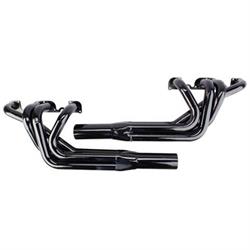Engine Install and Firing - 410 Sprint Car Build
This is it. If you’ve been following along with our sprint car build in partnership with the National Sprint Car Hall of Fame, you’ve seen this car go from a stack of tubing at EMi to a fully assembled roller. You’ve also seen a screaming 950 horsepower 410 go together at Speedway Motors Racing Engines. This is the moment when it all comes together.
When the Hall of Fame delivered the car to our shop, it was like seeing an old friend. After they picked it up over a year ago, it spent its time travelled to tracks all over the country to promote the Hall of Fame and show off their raffle prize. We’re pleased to report that they sold out of tickets, and by the time you read this the car will be on its way to the lucky winner.
But we have to put it together first. We started by removing most of the body panels to allow access to all the pieces that would need to be connected to the engine. Jason Martin knows his way around a sprint car, so he came by to help us with the install. The car was pretty complete, but missing a few details like the throttle linkage and some plumbing forward of the firewall. After a few deliveries from the Speedway Motors parts counter, we were off and running.
We removed the lines from the injector nozzles in the cylinder heads to make it easier to fit the wide 410 into the chassis. We’ve found that the Crow Engine Lift Sling works well for engines like this. With the sling bolted to the center header bolt holes on both sides, we lifted the engine into place. Getting the splines on the u-joint aligned with the driveshaft can be tricky. Typically, rocking the car will rotate the tires, rearend, and driveshaft enough to allow the splines to engage. Since we didn’t have the spur gears installed in the quickchange yet, Jason loosened the torque tube and slid it back, allowing access to the splines on the shaft. With the dowel pins engaged, Jason rotated the power steering spud to align with the drive spud on the back of the camshaft.
With the engine installed, our next move was to hang the Schoenfeld headers. These headers are designed to eliminate over 200 degrees of bend, freeing up some horsepower over a conventional design. We special ordered the coated versions for this car, but we keep the uncoated versions on the shelf. We also hooked up the lines to the Auto Meter oil pressure and water temp gauges. Then came the throttle linkage, K&N airbox, and Afco double-pass radiator.
When we were finally ready to make some noise, we pushed the car outside into a 20-degree Nebraska winter day to fire it up. Using the Bert starter here really made things easy. Pushing a sprint car off in a snowy parking lot might have been fun, but it would have been significantly more difficult. Because the 410 has a 17:1 compression ratio, we used a big deep-cycle battery hooked to a charger to make sure there would be enough juice.
After a few cranks, the big engine roared to life. As you heard in the last episode, the 410 really sings at 8000 rpm on the dyno, but it also sounds pretty mean at idle in the car without the dyno holding it back. The combination of huge compression, big duration, and a Kinsler injector through open headers makes for one of the best sounding idles in all of racing. After looking things over to make sure there were no leaks or other issues, we all took a minute to enjoy the experience. Our hard work had paid off, and there was a ready to race sprint car crackling, loping, and lurching in front of us.
We would have loved to crack the throttle open and hear it rev. But, after about 10 minutes of running, the gauge still showed no water temperature. Unwilling to chance any damage to a cold aluminum engine, we reluctantly killed the mag and shut it down. This will make a great race car for the lucky winner.
Before we loaded the car up and said goodbye, we drained the methanol and lubricated the fuel system. Stay tuned for a Tech Talk here in the Toolbox to show that procedure.
Building a sprint car from raw materials to ready to race has been a very rewarding experience. We want to thank all the vendors who participated with parts and expertise, our own sprint car experts here at Speedway Motors for their knowledge and careful assembly, and the National Sprint Car Hall of Fame for making it all possible.




